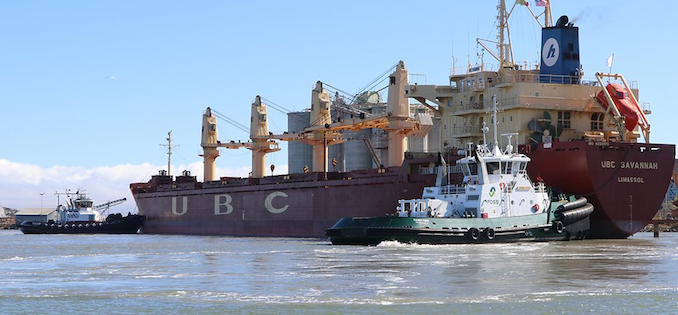
By the Daily Post staff
The COVID-19 lockdown has resulted in a 21% drop in materials handled by the Port of Redwood City, officials said today.
The Port, a city agency that manages the docks for large cargo ships, measures its business in tons. In the fiscal year that ended on June 30, the port handled 2.1 million metric tons (MT) of materials compared to 2.65 million MT for the previous fiscal year.
“Most of this decline took place in the fourth quarter of our fiscal year (April-June 2020), which tells us it is a direct result of the statewide mandates impacting the construction industry due to COVID-19,” said Port Board Chairman Ralph A. Garcia. “Prior to that, we were on track for our third record-breaking year in a row with cargo movement.”
Despite these numbers, Port officials are optimistic that the dip will be short lived because cargo numbers are back up to about 80% of pre-COVID and are still considerably higher than the numbers from 2017.
The Port administration doesn’t expect the decline in fees from ships will force any reductions in its operations.
“Despite the market’s reaction to this pandemic, the Port is in an enviable position in that we’re not having to tap our reserves or reduce operational levels,” said Port Executive Director Kristine A. Zortman. “Still, we are keeping a close eye on global conditions and will be adjusting things as needed as we continue to monitor this turbulent time.”
Other circumstances that could help tonnage continue to rebound include the passage of an infrastructure bill, which could increase construction material movement through the Port once projects get underway, and a vaccine for COVID19, which is expected to increase consumer confidence and spur more cargo movement.
“Port business is a global one, and market conditions shift due to a variety of factors,” said Zortman. “Our job is to ensure we navigate these changes as efficiently as possible to enable a strong fiscal footing for the Port’s long-term health.”
